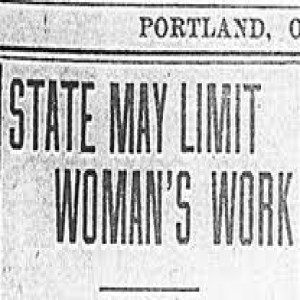
- Podcast Features
-
Monetization
-
Ads Marketplace
Join Ads Marketplace to earn through podcast sponsorships.
-
PodAds
Manage your ads with dynamic ad insertion capability.
-
Apple Podcasts Subscriptions Integration
Monetize with Apple Podcasts Subscriptions via Podbean.
-
Live Streaming
Earn rewards and recurring income from Fan Club membership.
-
Ads Marketplace
- Podbean App
-
Help and Support
-
Help Center
Get the answers and support you need.
-
Podbean Academy
Resources and guides to launch, grow, and monetize podcast.
-
Podbean Blog
Stay updated with the latest podcasting tips and trends.
-
What’s New
Check out our newest and recently released features!
-
Podcasting Smarter
Podcast interviews, best practices, and helpful tips.
-
Help Center
-
Popular Topics
-
How to Start a Podcast
The step-by-step guide to start your own podcast.
-
How to Start a Live Podcast
Create the best live podcast and engage your audience.
-
How to Monetize a Podcast
Tips on making the decision to monetize your podcast.
-
How to Promote Your Podcast
The best ways to get more eyes and ears on your podcast.
-
Podcast Advertising 101
Everything you need to know about podcast advertising.
-
Mobile Podcast Recording Guide
The ultimate guide to recording a podcast on your phone.
-
How to Use Group Recording
Steps to set up and use group recording in the Podbean app.
-
How to Start a Podcast
-
Podcasting
- Podcast Features
-
Monetization
-
Ads Marketplace
Join Ads Marketplace to earn through podcast sponsorships.
-
PodAds
Manage your ads with dynamic ad insertion capability.
-
Apple Podcasts Subscriptions Integration
Monetize with Apple Podcasts Subscriptions via Podbean.
-
Live Streaming
Earn rewards and recurring income from Fan Club membership.
-
Ads Marketplace
- Podbean App
- Advertisers
- Enterprise
- Pricing
-
Resources
-
Help and Support
-
Help Center
Get the answers and support you need.
-
Podbean Academy
Resources and guides to launch, grow, and monetize podcast.
-
Podbean Blog
Stay updated with the latest podcasting tips and trends.
-
What’s New
Check out our newest and recently released features!
-
Podcasting Smarter
Podcast interviews, best practices, and helpful tips.
-
Help Center
-
Popular Topics
-
How to Start a Podcast
The step-by-step guide to start your own podcast.
-
How to Start a Live Podcast
Create the best live podcast and engage your audience.
-
How to Monetize a Podcast
Tips on making the decision to monetize your podcast.
-
How to Promote Your Podcast
The best ways to get more eyes and ears on your podcast.
-
Podcast Advertising 101
Everything you need to know about podcast advertising.
-
Mobile Podcast Recording Guide
The ultimate guide to recording a podcast on your phone.
-
How to Use Group Recording
Steps to set up and use group recording in the Podbean app.
-
How to Start a Podcast
-
Help and Support
- Discover

On this day in labor history, the year was 1908.
That was the day the United States Supreme Court decided the case, Muller v. Oregon.
It was a landmark decision in the realm of protective labor legislation.
It restricted the workday to 10 hours for women.
Laundry owner, Curt Muller, required his female employees to work more than 10 hours a day, against Oregon labor laws.
The Supreme Court upheld his conviction and fine.
Protective labor legislation was a product of the reform social movements of the Progressive Era.
Reformers like Jane Addams worked to protect women from industrial dangers that bred physical and moral harm to women.
The decision drove a class-based wedge within the women’s movement that lasted for much of the 20th century.
Working class women generally supported protective labor legislation like Muller.
But Equal Rights Advocates like Alice Paul opposed it.
They argued that protective legislation like Muller rested on stereotypes regarding differences between men and women.
These differences often fueled anti-woman discrimination, state control and financial dependency.
As well, critics remarked the ruling set a precedent for women’s biology as child-bearers, as a basis for separate legislation.
Only later would working class critics note that the ruling did not cover domestics, agricultural workers, or white-collar workers.
The 1938 Fair Labor Standards Act would supplant some parts of Muller with its guarantees for workers of both sexes.
Many working class women later welcomed the passage of Title VII of the Civil Rights Act in 1965, which prohibited employment discrimination.
Some would concede the many flaws of protective labor legislation that held women back.
But women’s rights advocates would continue to debate protective legislation and the Equal Rights Amendment well into the 1970s.
More Episodes
 2022-10-28
2022-10-28
 2022-10-26
2022-10-26
 2022-10-25
2022-10-25
 2022-10-21
2022-10-21
 2022-10-18
2022-10-18
 2022-10-17
2022-10-17
 2022-10-16
2022-10-16
 2022-10-15
2022-10-15
 2022-10-13
2022-10-13
 2022-10-10
2022-10-10
Create your
podcast in
minutes
- Full-featured podcast site
- Unlimited storage and bandwidth
- Comprehensive podcast stats
- Distribute to Apple Podcasts, Spotify, and more
- Make money with your podcast
It is Free
- Privacy Policy
- Cookie Policy
- Terms of Use
- Consent Preferences
- Copyright © 2015-2025 Podbean.com


